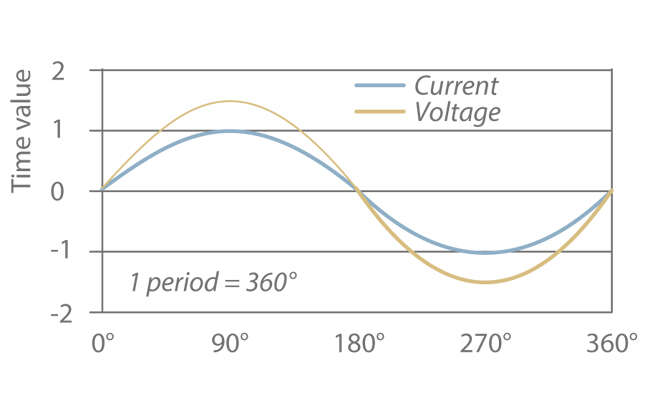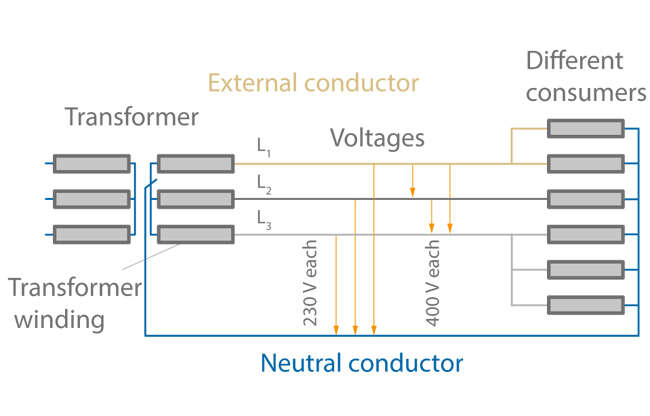Alternating current
Alternating current is internationally abbreviated as AC and describes the electrical current that periodically changes its direction (polarity), usually sinusoidally. This periodic change is expressed as frequency
and indicates the number of changes in current direction per second.
In technical terms, the benefits of alternating current are that it is easy to generate and transform the voltage for the low-loss, long-distance transmission of high-voltage alternating current, and it is easy to convert from one voltage to another using a transformer. Consequently, alternating current is used primarily in public electrical power networks.
With sinusoidal alternating current, the instantaneous values across a complete period, with one positive and one negative half-wave (alternation), exactly match the values of the sinus trigonometric function across a full circle (0 - 360 degrees).
See Fig. 1 Alternating current
With sinusoidal alternating current, the instantaneous values across a complete period, with one positive and one negative half-wave (alternation), exactly match the values of the sinus trigonometric function across a full circle (0 - 360 degrees).
See Fig. 1 Alternating current

Fig. 1 Alternating current: Flow of current and voltage of sinusoidal alternating current for a purely ohmic load
Normal AC mains supply is synonymous with single-phase alternating current and, in Germany and other European countries, corresponds to a frequency of 50 Hz and a voltage of 230 V. In North America and parts of Japan, however, mains frequencies of 60 Hz with voltages of 120 V (rounded from 117 V) are used.
In practice, assembling three coils in the generators creates three separate "phases" of alternating current instead of just one alternating current.
They are evenly distributed around the periphery. These coils produce separate alternating voltages, each of which is staggered by a third of a period (equating to 120 degrees in a circular orbit) compared with other coil voltages. The individual phases of industrial alternating current can be used independently of one another as separate systems for small consumers.
The alternating current is usually distributed to the customers with the three phases (L1, L2, and L3), a neutral conductor (N), and an earth (PE) conductor.
See Fig. 2 Alternating current
See Fig. 2 Alternating current

Fig. 2 Alternating current: Three-phase system with neutral conductor (four-conductor system) asymmetrically loaded by different consumers
A special form of alternating current is three-phase alternating current, as used in public power networks to distribute large amounts of electrical energy. For motor drives, this type of current offers robust electric motors of particularly simple design.
